As I told you in the previous post about the Azalea Festival in Nezu Shrine, I was honored to visit the Kato Tomomi Workshop, where traditional samurai armor and helmets are crafted and assembled. It was a great time with Mr. Kato Tomomi, the founder of Kato Tomomi Workshop, a craft meister of Kabuto and Yoroi, samurai battle helmets and armor. The photo of the purple Kabuto and Yoroi with a V-mark was crafted in this workshop with a particular order by Louis Viton for its annual memorial event. This means that his craftsmanship is admired worldwide.

The Kato Tomomi Workshop is in the Kato family’s home. It is not so large but spacious enough for three craftsmen to sit in and devote themselves to their work. When I was invited into the room, Takumi’s father, in the black shirt, was hammering and riveting tiny parts of the Kabuto. The riveting tone sounded rhythmically and constantly, giving me a sense of his skill even though I am not an expert in craftsmanship.
Although there are no real samurai these days, many parents still want to have a set of Kabut and Yoroi in their house to display on Boy’s Day, May 5th, wishing their boys health, growth, and a prosperous future. Due to the smaller size of houses in populated towns like Tokyo and Osaka, the smaller sizes of Kabut and Yoroi have been getting more popular among young families. The Kato family has used traditional skills and techniques even to make small ones, sometimes one-tenth size, which requires them to use more delicate techniques. So, I believe that they must have more excellent skills than the craftsmen in the samurai era.


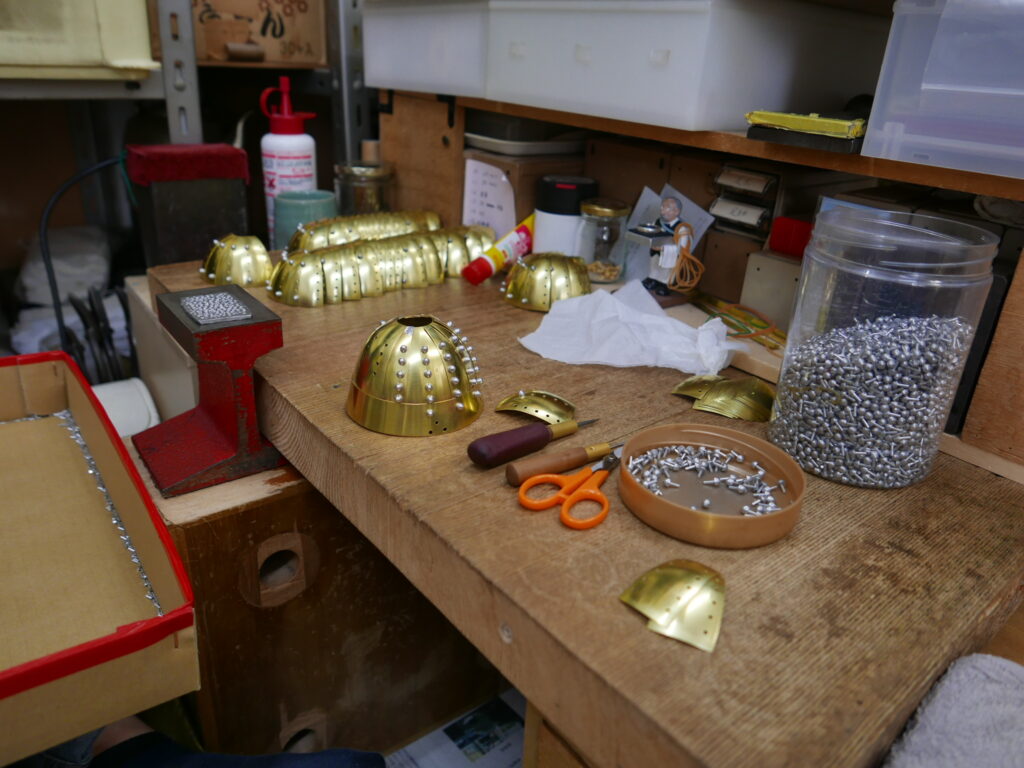
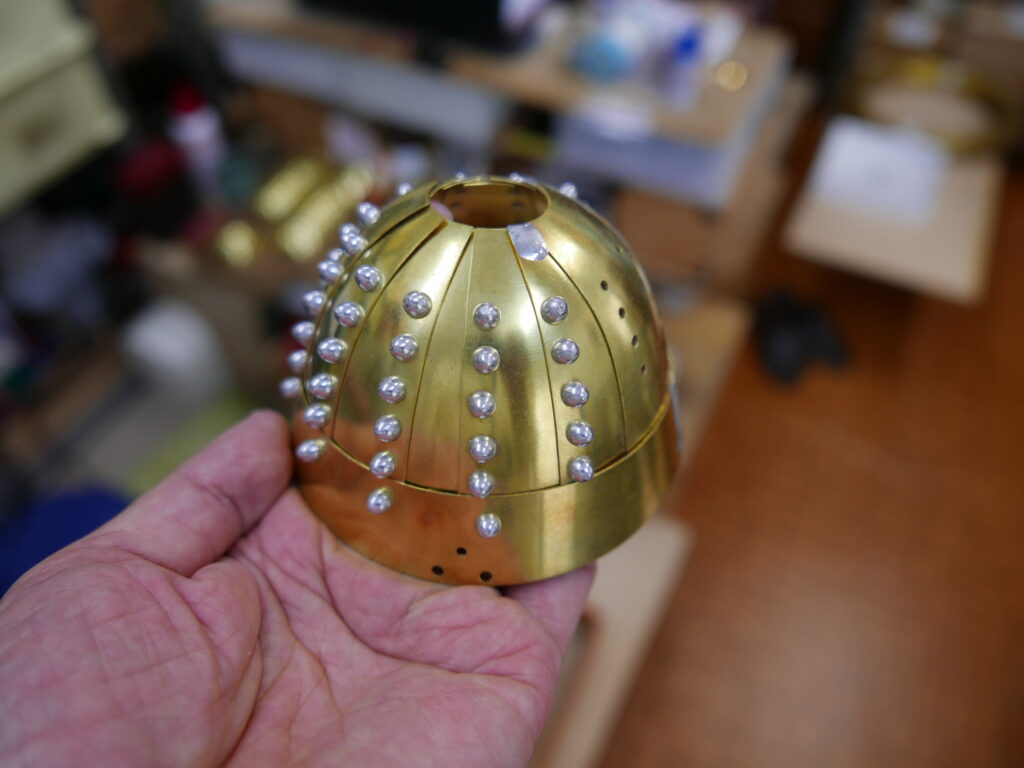
Takumi, grandson of Mr. Kato Tomomi, must have been born to be a samurai armor craftsman.
He told me that crafting Kabuto and Yoroi was quite natural to him as a job because he had grown up with the sounds of his grandfather’s and father’s hammering and being surrounded by many tools and parts of Kabuto and Yoroi in his home.

Takumi told me that Kabuto and Yoroi have both artistic and functional beauty. Some typical sets of Kabuto and Yoroi use several colors, including gold plates, which make the armor gorgeous. For example, many samurai commanders put giant metal plate ornaments called Tatemono on their Kabuto, such as the rising sun, crescent, deer’s horn, and stag beetle. They worked as their trademarks, showing their motto and threatening opponents. According to Takumi, those are beautiful and attract attention from people a lot, but when it comes to crafting, they need help with techniques. For instance, when he put a large pair of stags on the front of Kabuto without any care, it became so heavy that soldiers’ heads must have been pulled backward, putting them in jeopardy in the battle. So, he has to change the thickness of the metal plates, making them gradually thinner toward the top to stabilize the balance. That’s a fantastic technique, even on thin plates.
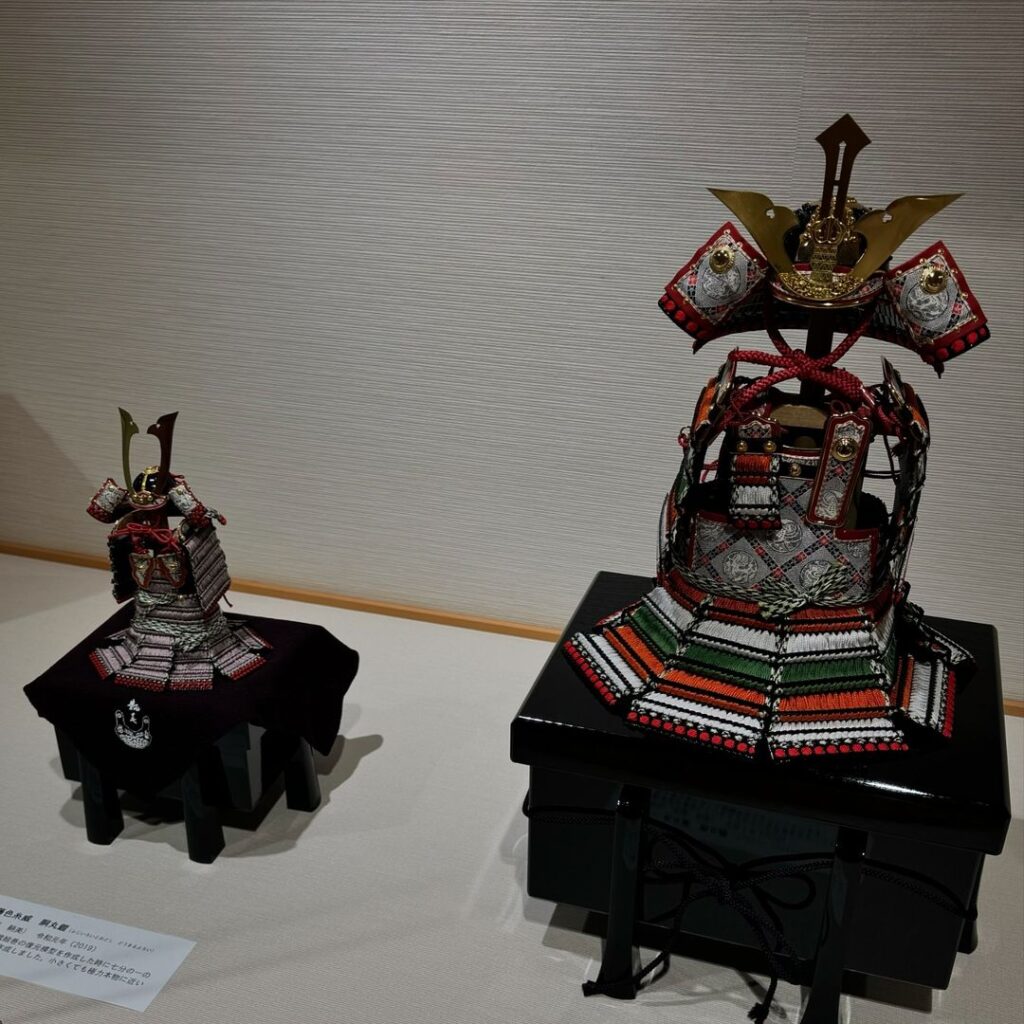
Turning our eyes to the functional arts, I learned that even in making knots and assembling small protector plates, many ideas and skills are devoted to one set of Kabuto and Yoroi. Look at the small plates of armor. Those are assembled alternatively with leather threads, which means protectors will still work even if some of the threads are cut off amid the fight.
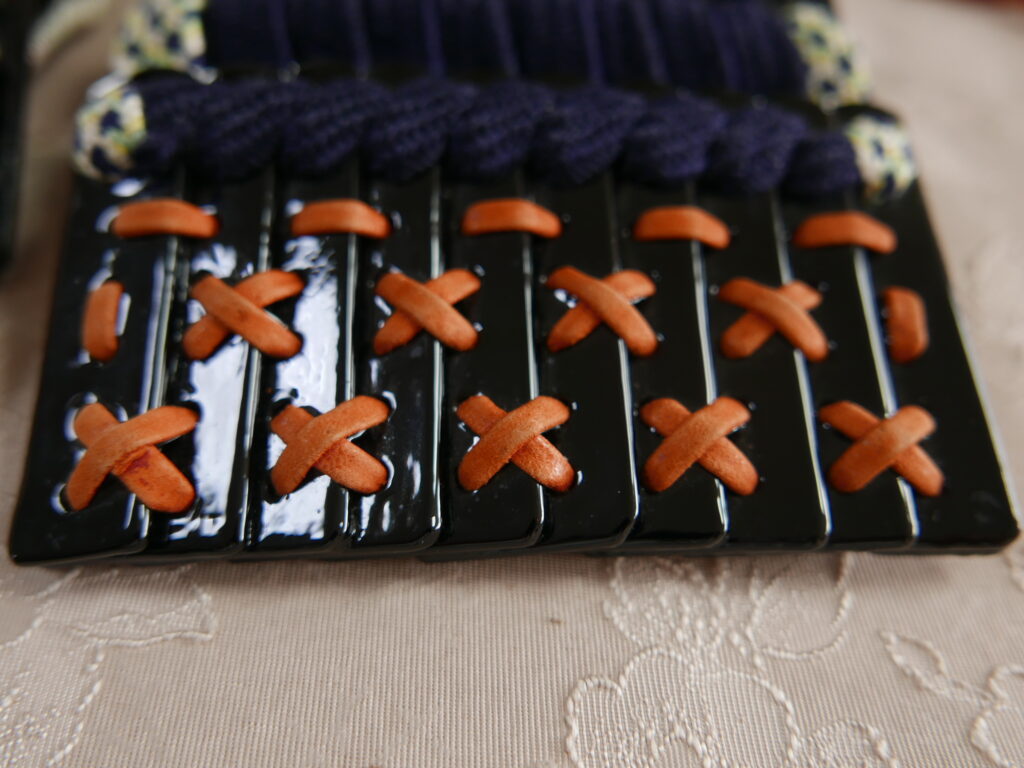
Many ropes are used to assemble, which is called Odoshi. These ropes provide the Yoroi with flexibility and allow samurai soldiers to move easily and swiftly. The ropes are also knitted according to protective purposes. Please take a look at the red ropes in the photo below; there are seven in the bottom row but eight in the middle row and seven in the top row again, which also work as protectors’ durability against the opponent’s slashes. Even if some ropes are cut off, the Yoroi will never lose or drop its protector plates. It’s so amazing. I’m so impressed with the craftsman’s ideas and skills!
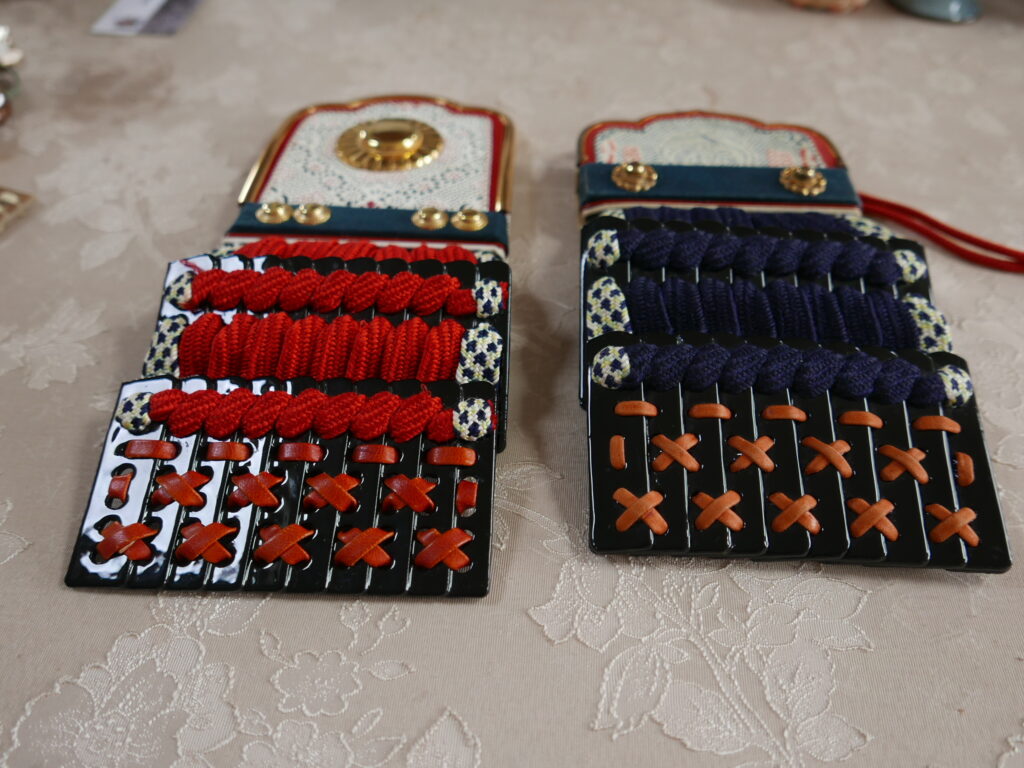
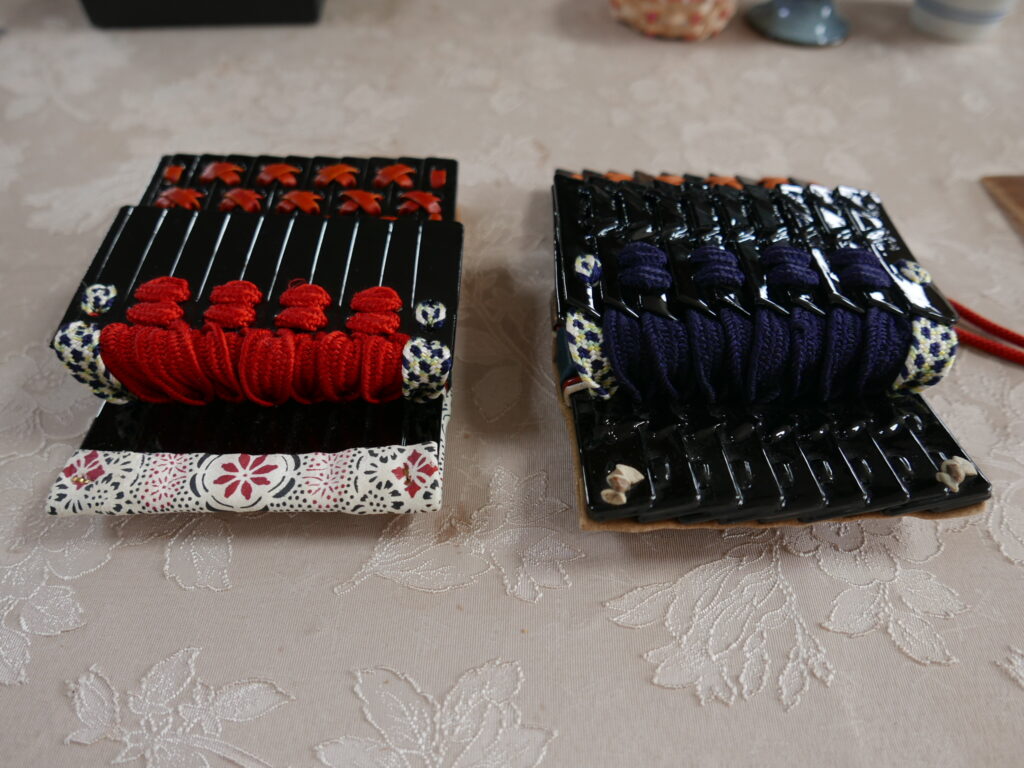
The following photo shows three assembled belt-like parts called Haritsuke-ita, Ni-no-ita, and San-no-ita, which means the connecting plate, the second plate, and the third plate, respectively. They are connected and make low backside parts of Kabuto. You can find that each belt-like part is made of a different size and a different number of small plates to create a broader shape in the lower part and a bit narrower in the higher part (see the second photo). It covers a wide range of the samurai’s shoulders and neck and gives smooth movement due to the rope connections when he turns his head.
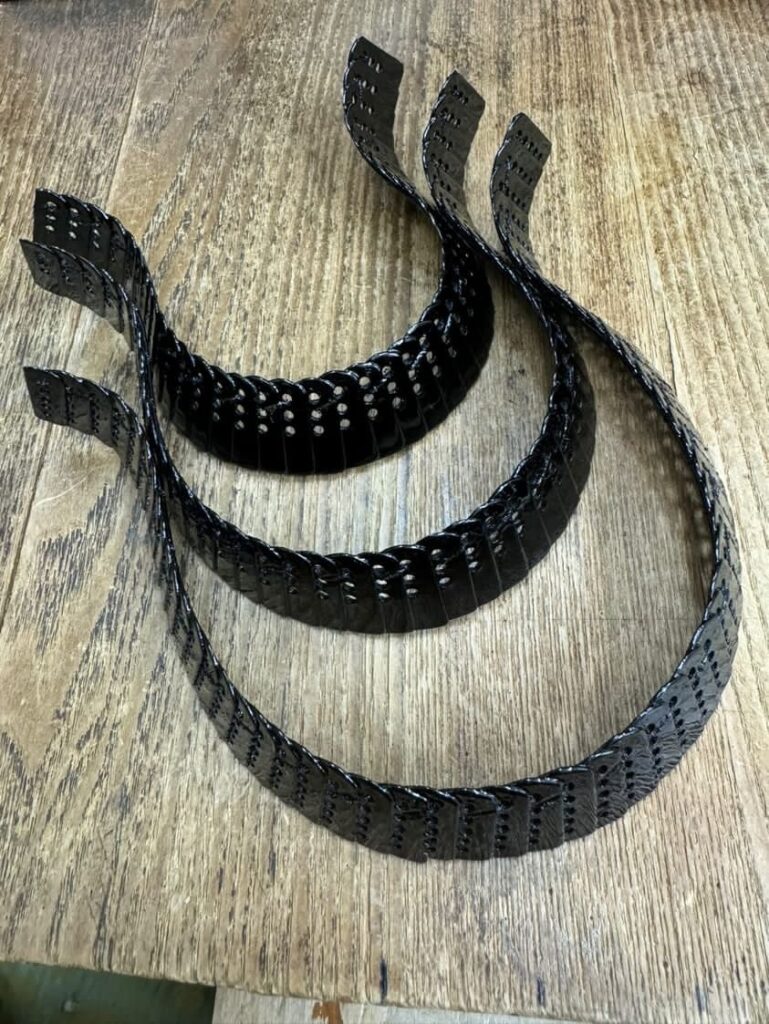
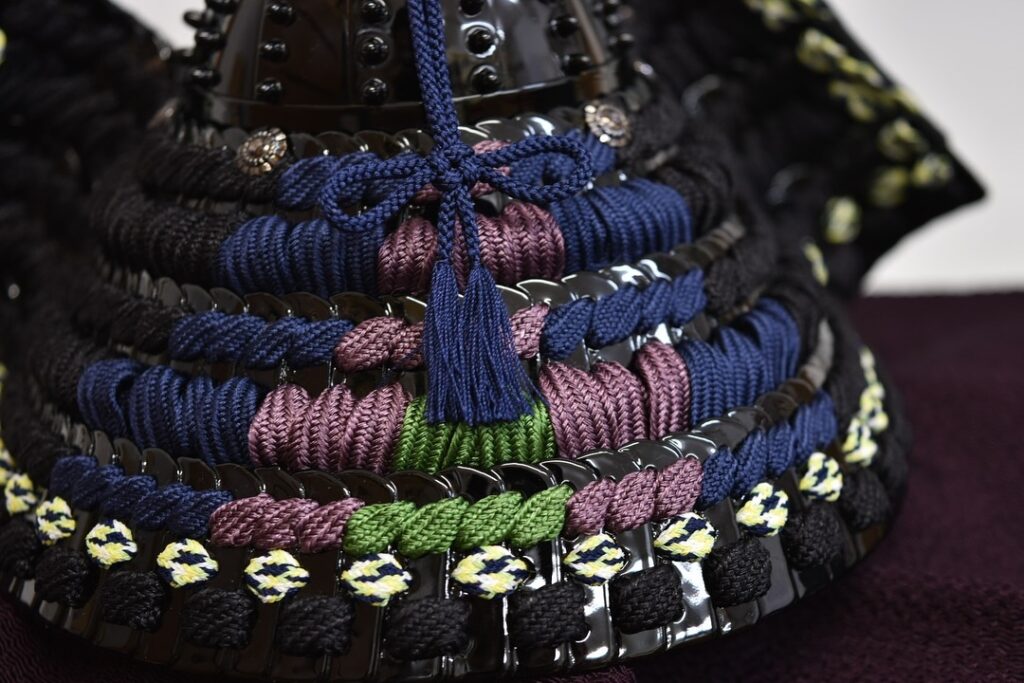
His grandfather, Mr. Kato Tomomi, the founder of the Kato Tomomi Workshop, is so dedicated and enthusiastic about Kabuto and Yoroi crafting that he has spent considerable time learning traditional skills and developing his techniques and methods. When he started crafting them, he had no textbooks or design sketches. He visited museums, spent whole days observing the authentic Kabuto and Yoroi, and learned how they were designed and assembled by sketching them. Tomomi also said that many museums had never allowed him to touch them, even close access, because most are registered as national treasures.
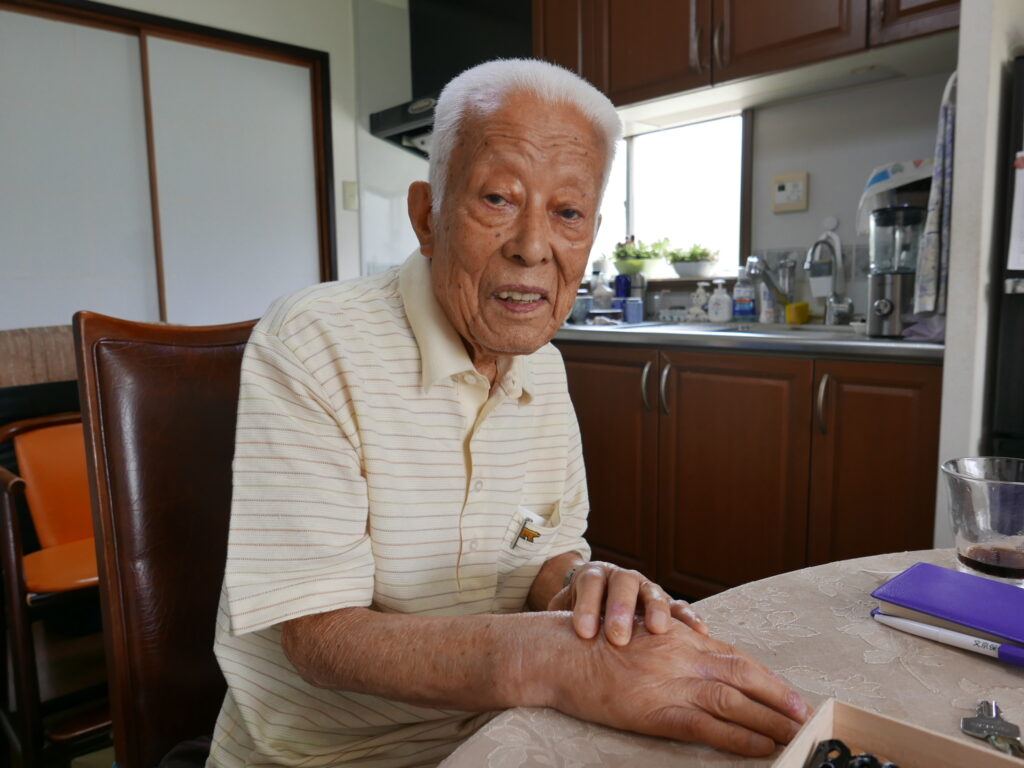
He has published a book personally to pass on his skills and techniques to the next generation. The title is “Yoroi Banashi Ima Mukashi” or “The Stories of Samurai Armor Now and Then.” Unfortunately, it is not sold at any bookstores now, but he was so generous that he shared one copy with me, who wants to learn more about Kabuto and Yoroi. I am still studying his skills and arts from the book but have yet to finish it. I was afraid it would be too early to write this post, but my strong desire to share what I have learned from Mr. Kato with international tourists encouraged me to try it. I was afraid I made some mistakes in my first draft, but it was well written, according to Takumi’s review.
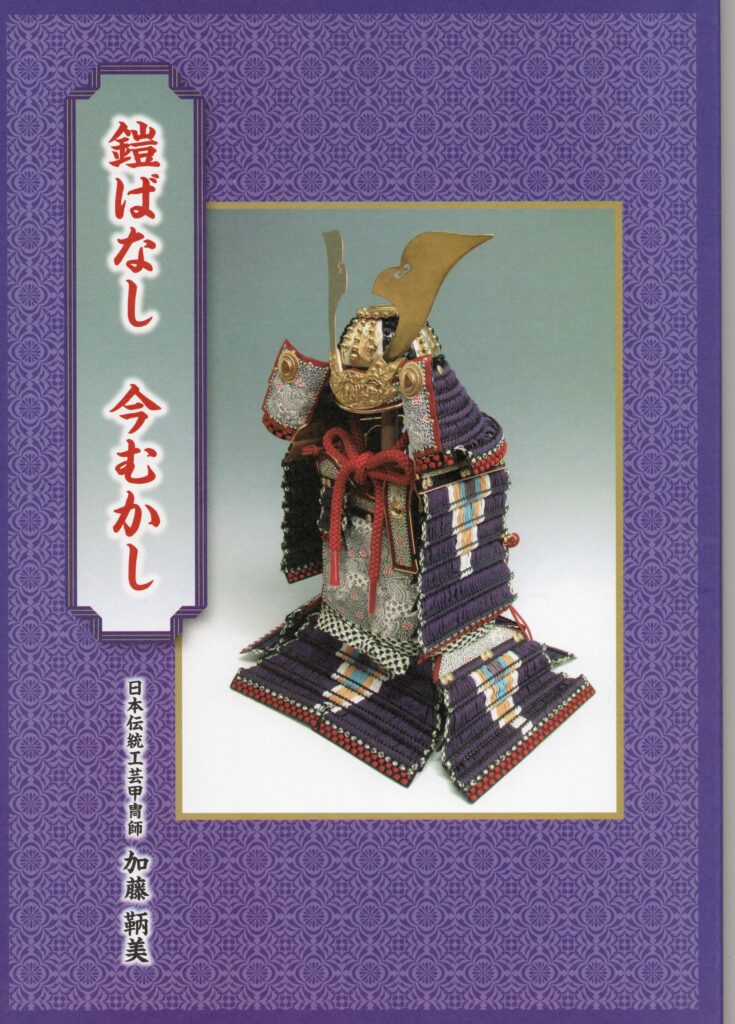
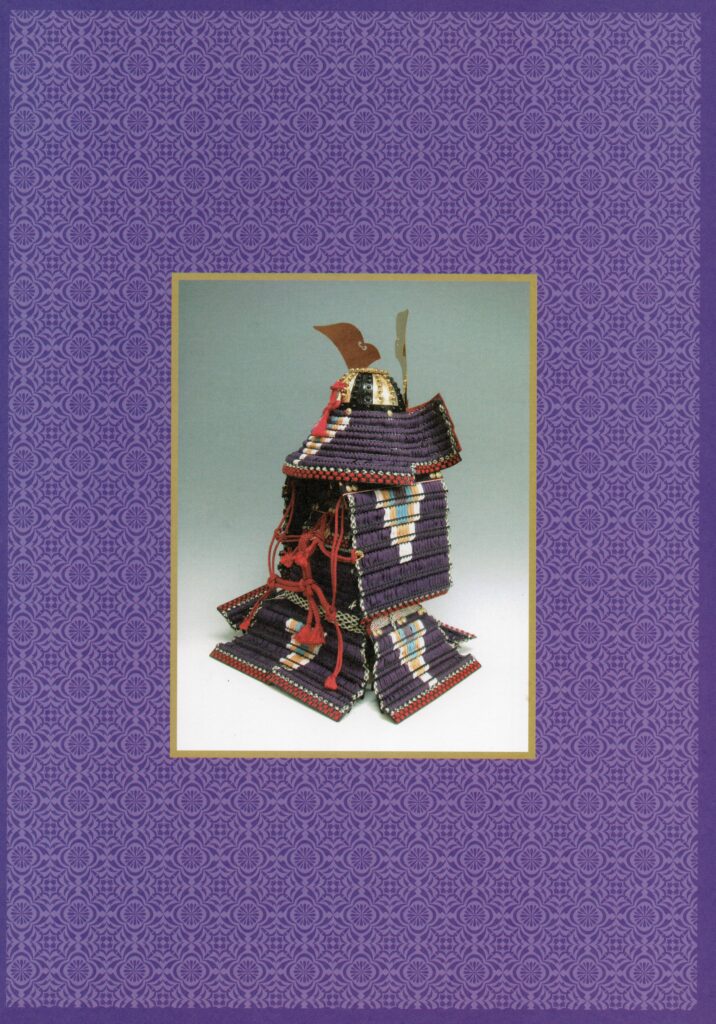
Takumi also launched his brand, “Akisane,” expressing his wish to make Kabuto and Yoroi more attractive to young Japanese people by using dark metallic colors. It looks so cool, and I am sure his brand will lure young parents who have grown to be familiar with the anime Gundam series.
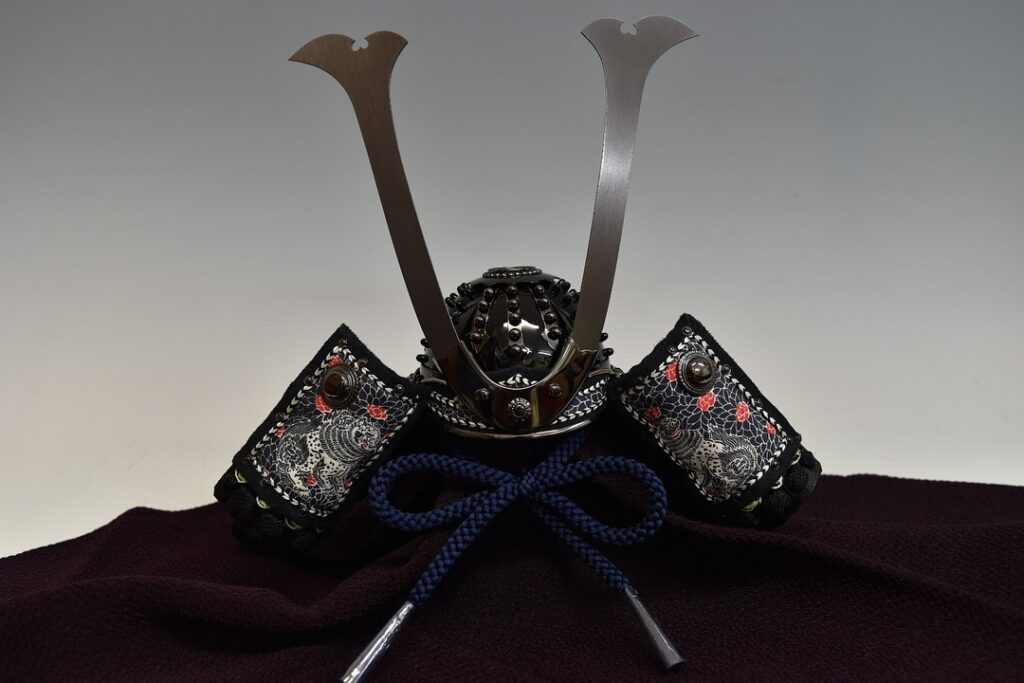
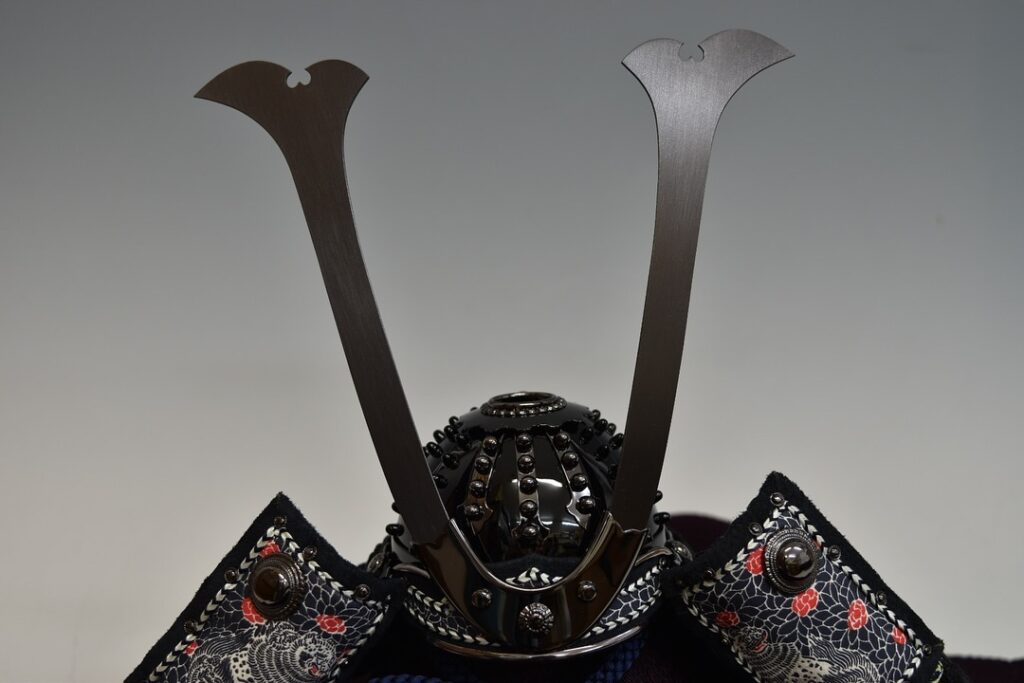
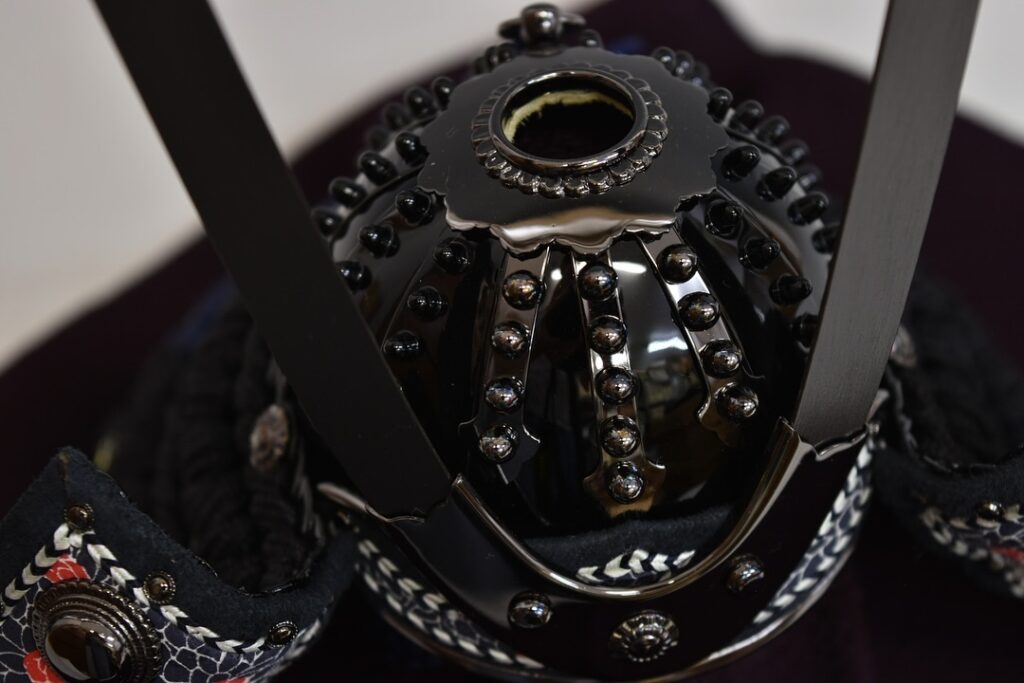
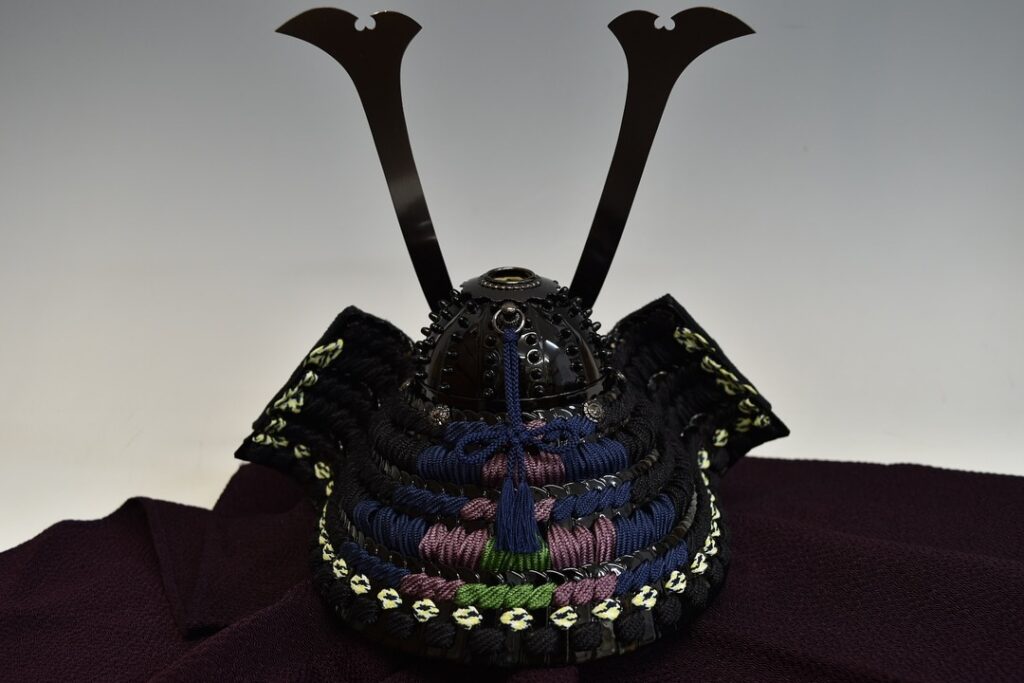
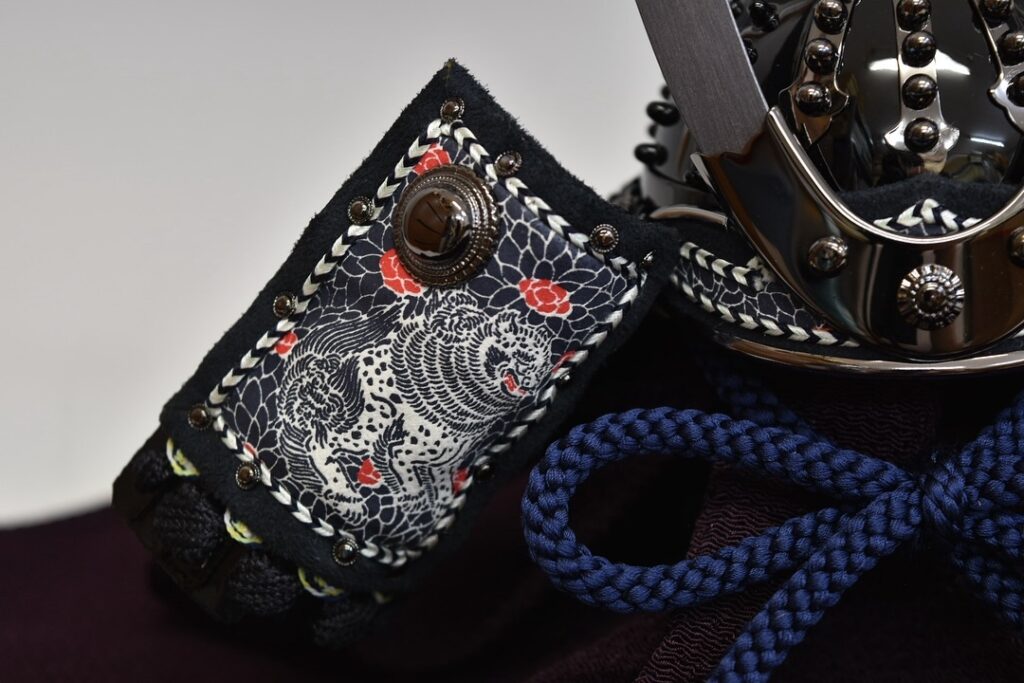
He said that, as the third generation of the craftsman family, he would like to take over the family skills developed over two generations. These days, an aging society with fewer children and smaller housing in the cities in Japan has kept people away from Kabuto and Yoroi. But Takumi believes that it’s Mottainani, a famous Japanese phrase meaning that you are wasting something valuable that is still useful. He then started using social media networks, like the workshop’s official website and Instagram, to disseminate their art and skills. Furthermore, he is trying to convert his skills to making accessories and items like smartphone straps. I bought a strap at the Azalea Festival in Nezu Shrine and hung it on my Guide ID Card, hoping my guests would be interested and ask more about it.
Please visit the Kato Tomomi Workshop’s official website and Instagram. Instagram posts are written in Japanese and English. If lucky, you can find a notice of an exhibition or trial workshop to make a small part of Kabuto and Yoroi as accessories.
Website: https://tomomikato.com
Instagram: https://www.instagram.com/kabu10_ka10
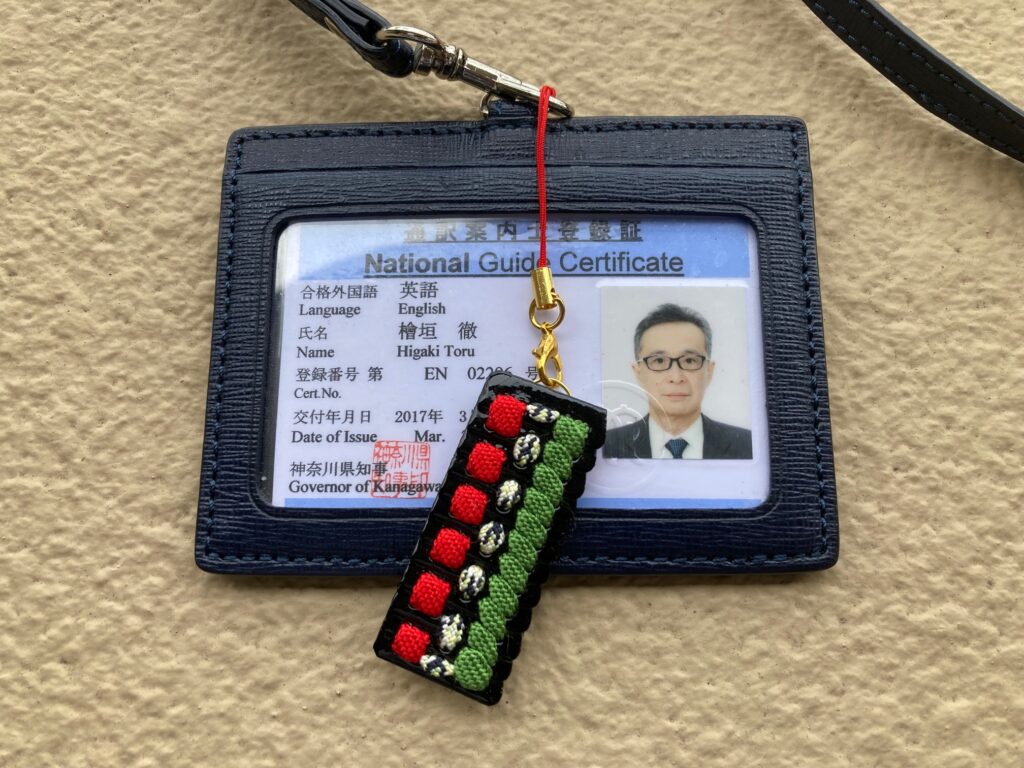
Thank you for reading my post.
If you need an English-speaking guide to explore Tokyo, please click “Contact me!” below. I am willing to help you create an unforgettable private tour. Let’s enjoy amazing Tokyo with me!
Please also leave your feedback on this post in the comment box at the bottom. I am willing to hear your opinions, requests, and suggestions.
Please click the links to get updated via my X (former Twitter) and Instagram.
X (former Twitter): https://x.com/ToruGuide
Instagram: https://www.instagram.com/toruhigaki/
Please visit the related post below.
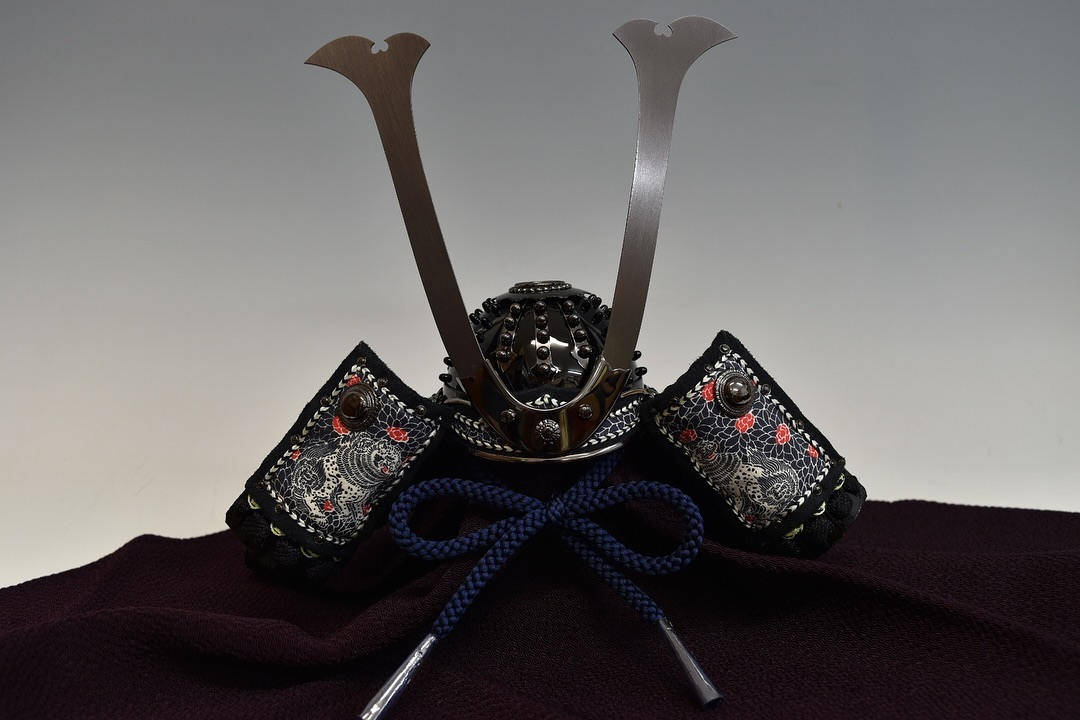




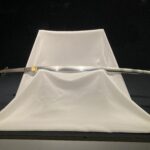
Comment